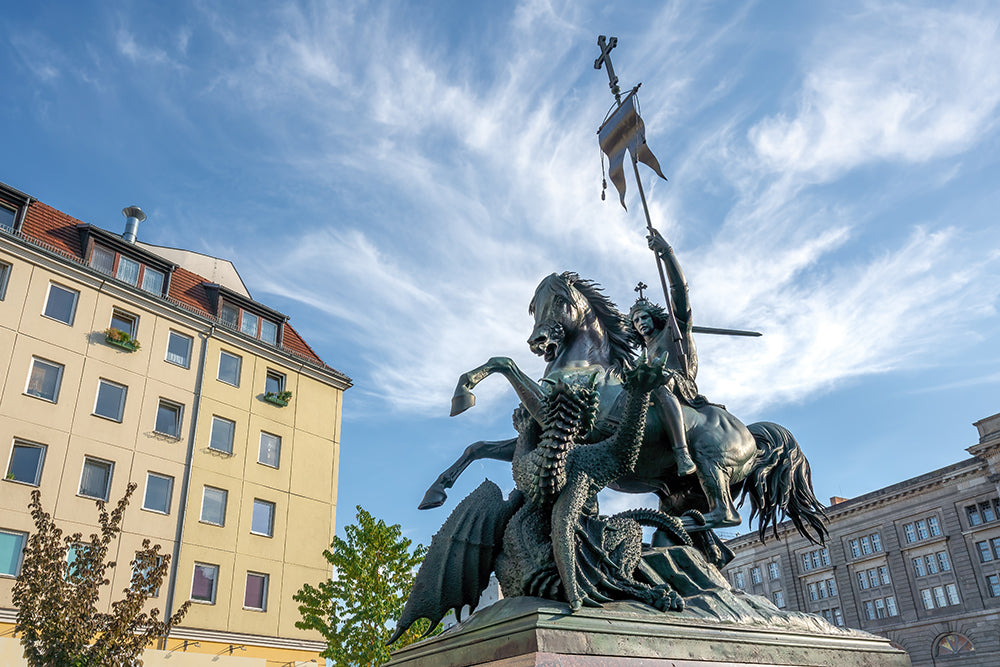Dr Richard Dune
14-02-2023
What’s the story behind Valentine’s Day?
Image by AtlasComposer via Envato Elements
Uncovering the history and traditions of love and romance
Valentine's Day is celebrated worldwide on February 14th. In the UK and worldwide, candies, flowers, and gifts are exchanged between loved ones. It is also one of the busiest days for restaurants. In 2025, Valentine's Day spending is projected to reach record highs in both the UK and the US. In the UK, total spending is expected to exceed £2.1 billion, marking a significant increase from previous years.
In the US, consumers are anticipated to spend a record $27.5 billion, with the average individual expenditure rising to $188.81.
But who is this mysterious saint, and where did these traditions come from?
In this blog, Dr Richard Dune explores the meaning and history of Valentine's Day, from ancient Roman rituals to Victorian card-giving customs.
The lasting legend of St. Valentine
What's the origin of Valentine's Day? Its history and that of the patron saint are shrouded in mystery. Who was Saint Valentine, and how was he associated with this ancient ritual?
There are at least three martyrs named Valentine or Valentinus in the Catholic Church. According to legend, Valentine was a priest in Rome in the third century. Claudius II banned marriages for young men because he thought single men made better soldiers. As Valentine realised the decree was unfair, he defied him and continued to marry young lovers in secret. Claudius ordered Valentine's death when he found out what he had done. Others say Valentine's Day is named after Saint Valentine of Terni, a bishop. Claudius II beheaded him, too, just outside Rome.
Some stories say Valentine was killed for attempting to help Christians escape harsh Roman prisons. An imprisoned Valentine is said to have sent the first "Valentine" after falling in love with a young girl, possibly his jailor's daughter. Before he died, he wrote her a letter signed "From your Valentine”, an expression that still lives on today. While the Valentine legends are murky, they all emphasise his sympathetic, heroic, and, most importantly, romantic appeal. As a result of this reputation, Valentine became one of England's and France's most popular saints during the Middle Ages.
The pagan origins of Valentine’s Day
Some think Valentine's Day is celebrated in February to remember Valentine's burial or death, which probably happened around AD 270. It's been claimed that the Christian Church shifted St. Valentine's day to February to "Christianise" Lupercalia, a pagan holiday. Lupercalia was a fertility festival celebrated on the ides of February, or 15th of February, in honour of Faunus, the Roman god of agriculture.
Luperci, a Roman priest order, would gather at a sacred cave where Romulus and Remus, the founders of Rome, were believed to have been cared for by a she-wolf. For fertility, priests sacrificed a goat, and for purification, they offered a dog. They would then strip the goat's hide into strips, dip them into the sacrificial blood, and gently slap women and crop fields. The Roman women welcomed the touch of the hides because they believed it would make them more fertile. Later in the day, all the young women in the city would place their names in a big urn. Each bachelor picked a name and was paired with the woman he chose for the year. Marriages often resulted from these matches.
What is the meaning of Valentine's Day?
The Lupercalia festival survived the rise of Christianity but was outlawed by Pope Gelasius when he declared the 14th of February Valentine's Day at the end of the 5th century. It wasn't until later that the day was definitively associated with love. Valentine's Day was considered a day for romance during the Middle Ages since the 14th of February began the birds' mating season in France and England.
In his 1375 poem "Parliament of Foules”, Geoffrey Chaucer describes St. Valentine's Day as a day of romantic celebration:
"For that was sent on St. Valentine's Day when every foul came to choose his mate."
The Middle Ages were entirely of Valentine's greetings, but written ones only appeared after 1400. Among the oldest known Valentines today is a poem written in 1415 by Charles, Duke of Orleans, to his wife while imprisoned in the Tower of London following his capture at Agincourt. It's now in the British Library's manuscript collection in London. King Henry V commissioned a writer named John Lydgate to compose a Valentine's Day note for Catherine of Valois several years later.
What is the link between Cupid and Valentine’s Day?
In Valentine's Day cards, Cupid is frequently depicted as a naked cherub shooting love arrows at unsuspecting lovers. The Roman god of love, Cupid, is derived from Greek mythology as Eros. Some say Cupid was born to Nyx and Erebus, others to Aphrodite and Ares, and others to Iris and Zephyrus or even Zeus and Aphrodite.
In the Greek archaic poetic tradition, Eros was a handsome immortal who played with the emotions of Gods and men, inciting love with golden arrows and sowing aversion with leaden ones. His portrayal as a mischievous, chubby child on Valentine's Day cards began in the Hellenistic period.
Valentine’s Day greetings and gifts
Valentine's Day was first celebrated in the 17th century in Great Britain before spreading worldwide. As early as the 18th century, friends and lovers of all social classes exchanged handwritten notes or small tokens of affection. As printing technology improved, printed cards replaced written letters by 1900, popularising Valentine's Day greetings even more.
In the early 1700s, Americans began exchanging hand-made Valentines. In the 1840s, Esther A. Howland, commonly known as the "Mother of Valentines", began selling mass-produced Valentines. Howland fashioned elaborate creations out of real lace, ribbons, and colourful scraps of paper. According to the Greeting Card Association, an estimated 145 million Valentine's Day cards are sent each year, making Valentine's Day the second-largest holiday for sending cards (more cards are sent for Christmas).
Conclusion
Valentine’s Day has evolved from ancient Roman traditions and medieval romanticism into a modern celebration of love, appreciation, and connection. While the history of Valentine’s Day is steeped in legends and cultural influences, its message remains universal, spreading love and kindness. Whether you celebrate with a grand gesture or a simple act of appreciation, this day reminds you of the importance of personal and professional relationships.
At The Mandatory Training Group, we understand the significance of fostering meaningful connections on Valentine’s Day and every day. Whether through effective communication, emotional intelligence, or workplace well-being training, we offer courses to help professionals build stronger relationships in both personal and professional settings.
Investing in these key areas will empower your team to enhance collaboration and create a more positive and productive work environment.
Last updated on 14-02-25
About the author
Dr Richard Dune
With over 25 years of experience, Dr Richard Dune has a rich background in the NHS, the private sector, academia, and research settings. His forte lies in clinical R&D, advancing healthcare tech, workforce development, and governance. His leadership ensures that regulatory compliance and innovation align seamlessly.

Related blog articles
View allContact us
Complete the form below to start your ComplyPlusTM trial and transform your regulatory compliance solutions.


